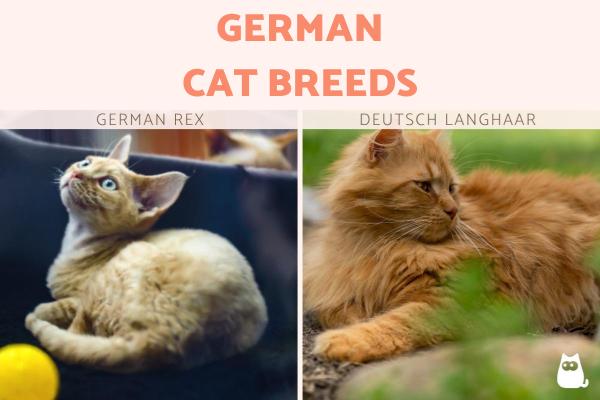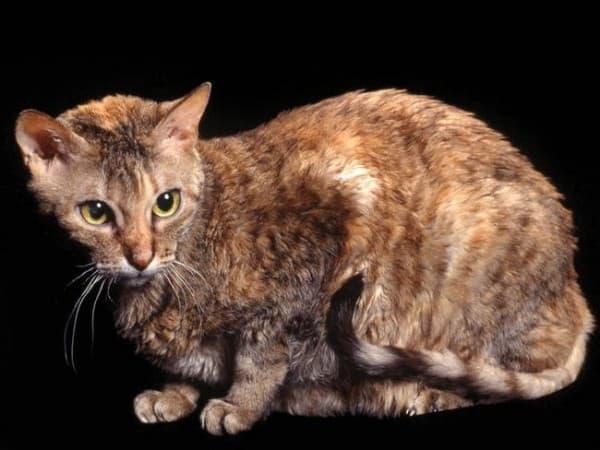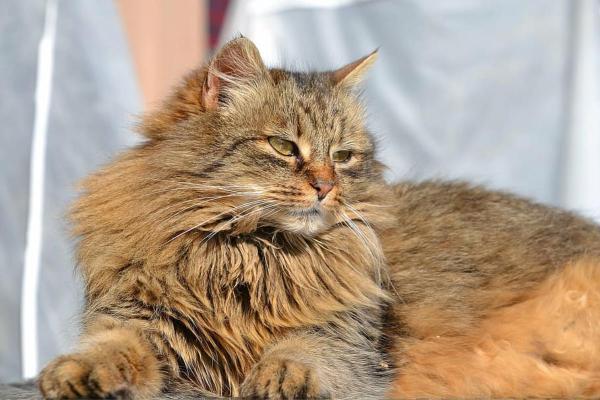
In relation to domestic animals, Germany is much more associated with the dog than the cat. The German Shepherd, Rottweiler and Dachshund are some examples of the many internationally recognized dog breeds which originate in Germany. Felines do not have the same history of breeding in Germany. There are practical, historical and cultural reasons behind this, with less of a focus on the selective breeding which is associated with German dogs. This does not mean there are no German cat breeds. While none have the global popularity which their dogs enjoy, there are cat breeds which originate in Germany. Some of these German cats are growing in popularity, but most remain either relatively or effectively obscure.
AnimalWised shares the different types of German cat breeds. In addition to providing some information on these breeds, we share photos of these German cats so you can know what they might look like. We should also note there are many mixed-breed German cats, but these animals do not have a designated breed.
German Rex
The German Rex is the only cat of German origin currently recognized by the International Feline Federation (FIFe). This is the organizational body responsible for creating the official standard for different feline breeds.
Other cat breeds also have the designation ‘rex’ in their common name. This is a reference to the rex mutation, as genetic mutation in certain animal breeds which results in a curly or wavy coat. It can be seen in some other animals, perhaps most notably rabbits and horses. Breeders often desire this curly coat trait and will breed animals specifically to encourage the trait.
Although short, German Rex coats are generally very soft and wavy. It can come in a wide variety of colors, with the most common being combinations of white, cinnamon, chestnut, brown and black. This includes all types of coat patterns, including colorpoint, tortoiseshell and tabby type coats in cats.
Proportionately, the German Rex is a medium-sized cat, rarely exceeding 11 lb (5 kg) in weight. Its legs are long and strong, allowing it to leap far. Its tail is thin and of considerable length compared to its body. As with its fur, the whiskers are slightly wavy. It has triangular ears and large, rounded eyes.
The German Rex are affectionate and homey cats who love spending time with their family. Although they are also very active and playful, it's ideal to provide them with structures for jumping and climbing. Cat-friendly toys will also be helpful in providing both physical and emotional stimulation. If they are properly socialized early on, they usually have no problem living with small children or other animals, regardless of their species.
Discover other types of curly haired cat breeds which include breeds with rex mutations such as the Cornish Rex, Devon Rex and Selkirk Rex, among others.

Deutsch Langhaar
The Deutsch Langhaar or German Longhair is not a breed recognized today by the International Feline Federation (FIFe). It is recognized by the World Cat Federation (WCF) association of breeders, which registered it for the first time in 2012. This occurred after several German breeders decided to promote breeding of specimens at a time when the breed was on the verge of extinction in Europe. The WCF is currently based in Germany.
The German Longhair is considered similar to the European Shorthair cat with the key difference being their coat length. This coat is long, silky and shiny, displaying a frill on the chest. Similar frills appear on the legs and tail. While they can present in a range of colors, gray and orange tabby coat patterns are common. Their long coat requires frequent brushing to ensure a good condition and the ability to thermoregulate.
Generally speaking, German Longhair cats prefer to reside in cold or temperate climates. Their long and dense coats are very good at trapping heat, something which can cause detriment if raised in very warm climates.
The German Longhair cat is medium-sized, with an adult weight ranging from 8.8-13.2 lb (4-6 kg). Males tend to be slightly larger than females. They are slender, strong and incredibly agile animals that can jump and climb with astonishing ease. This makes them easily capable of escaping from fenced gardens, terraces and patios.
In terms of temperament, this German cat breed is a friendly, playful and very lively feline that appreciates both interaction with their human family and spending time alone resting. They are curious and adventurous, especially younger individuals. They will not hesitate to explore anything that catches its attention. They require a good amount of environmental stimulation for cats, especially living in an apartment or house with no access to the outdoors.
Learn more about how to ensure the well-being of felines in small homes with our article explaining how many cats is too many in an apartment.

Other German cat breeds
Although there are only two German cat breeds which are officially recognized by breed standard organizations, there are breeders in Germany which are trying to develop certain breeds. An example is the Korat German line, a breeding line of the Thai Korat cat breed. While not originating in Germany, German breeders have established a recognized breeding line which may even separate into its own breed in the future.
Despite the German Rex and German Longhair cat being specific German cat breeds, the most common domestic feline in Germany is the European Shorthair. The German Longhair is considered a longhaired variation of the European Shorthair, since they share many similarities except for their obvious difference in coat length. The European Shorthair is not exclusive to Germany, being the most abundant feline breed on the European continent.
If intelligence is more important to you than country of origin, you may want to check out our article on the smartest cat breeds in the world.
If you want to read similar articles to German Cat Breeds, we recommend you visit our What you need to know category.
- Deutsch Langhaar. (n.d.). WCF - World Cat Federation.
http://wcf.info/WCF-EN/standard/longhair/Deutsch-Langhaar.html - Bydlinski, P., & Schwartz, B. (n.d.). Breed standards. Fifeweb.org
http://fifeweb.org/wp/breeds/breeds_prf_stn.php